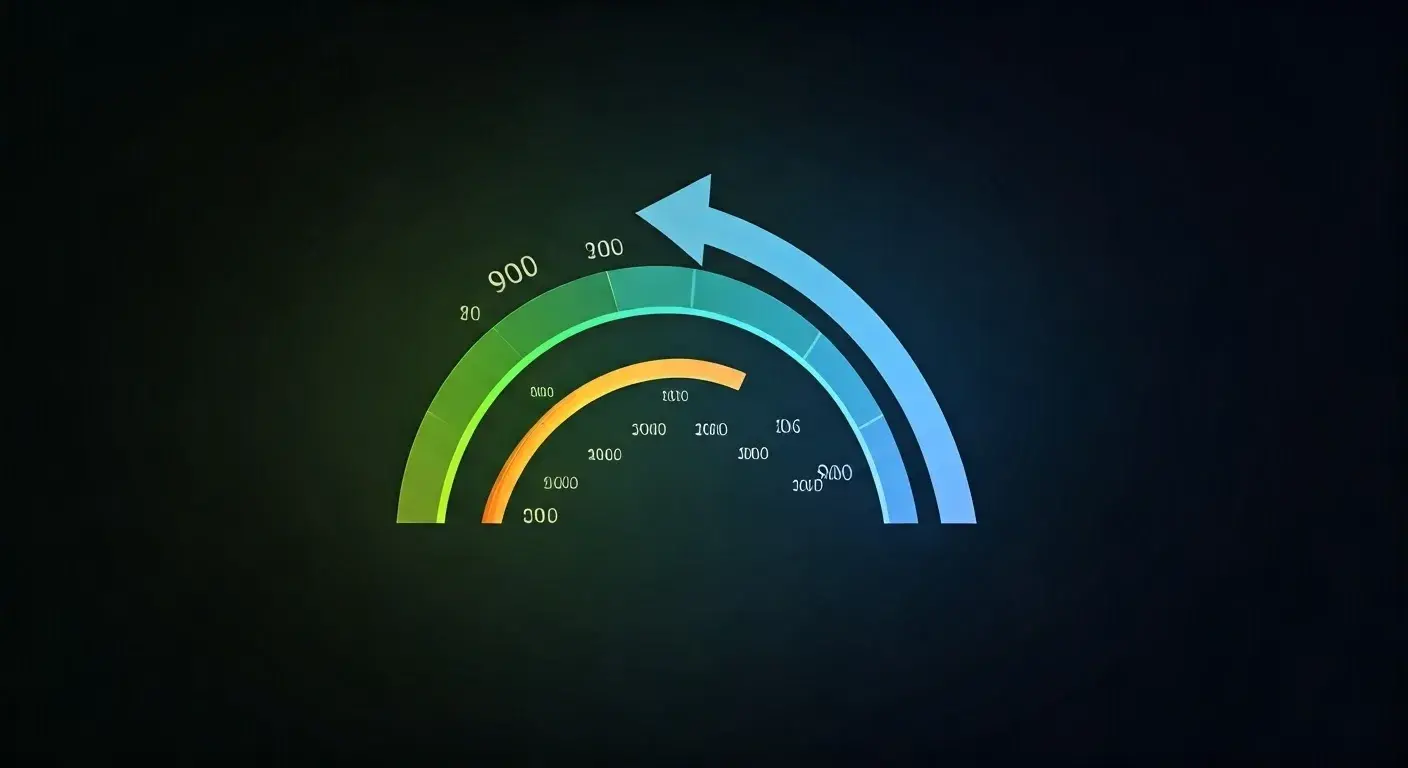-
Posted on: 15 Jul 2024

-
A credit score of 300 is considered extremely poor, placing you at the very bottom of the creditworthiness spectrum. It severely limits your access to credit, making it difficult to rent an apartment, get a loan, or even secure a reasonable interest rate on a car. The good news? While it's a long and challenging journey, it is possible to improve a 300 credit score. This comprehensive guide will walk you through understanding the causes of such a low score, the steps you can take to rebuild your credit, and what to expect along the way.
Understanding a 300 Credit Score
A 300 credit score reflects a history of significant credit mismanagement. It's important to understand what factors contribute to this score to identify where you went wrong and where you need to focus your efforts.
What Does a 300 Credit Score Mean?
Credit scores, typically ranging from 300 to 850, are numerical representations of your creditworthiness. A score of 300 signals to lenders that you are a high-risk borrower with a strong likelihood of defaulting on your debts. This means:
- Difficulty Obtaining Credit: Most lenders will automatically reject your application for credit cards, loans, or mortgages.
- High Interest Rates: Even if you are approved for a loan or credit card, the interest rates will be significantly higher than those offered to individuals with good or excellent credit.
- Denied Housing: Landlords often check credit scores before renting an apartment. A 300 credit score can lead to denial.
- Higher Insurance Premiums: Some insurance companies use credit scores to determine premiums. A low score could result in higher insurance costs.
- Difficulty Obtaining Utilities: Utility companies might require a security deposit to establish service.
Factors Contributing to a 300 Credit Score
A 300 credit score doesn't happen overnight. It's usually the result of one or more severe negative credit events. Here are some of the most common culprits:
- Bankruptcy: Filing for bankruptcy, especially Chapter 7, can significantly damage your credit score.
- Foreclosure: Losing your home to foreclosure has a devastating impact on your credit.
- Collections: Unpaid debts that have been sent to collection agencies are a major red flag for lenders.
- Late Payments: Consistently making late payments on your credit cards, loans, or other bills will quickly drag down your score.
- Charge-Offs: When a creditor determines that a debt is unlikely to be repaid, they may "charge it off." This negatively affects your credit report.
- Judgments: A court judgment against you for unpaid debt will appear on your credit report and damage your score.
- Repossessions: Having a vehicle or other property repossessed due to non-payment will severely impact your credit.
- High Credit Utilization: Using a large percentage of your available credit can also negatively affect your score. Even if you pay on time, maxing out your credit cards signals to lenders that you are overextended.
The Road to Recovery: Rebuilding Your Credit
Fixing a 300 credit score is a marathon, not a sprint. It requires patience, discipline, and a strategic approach. Here’s a step-by-step guide to help you start rebuilding your credit:
1. Obtain and Review Your Credit Reports
Your first step is to understand what’s dragging down your score. You are entitled to a free credit report from each of the three major credit bureaus (Equifax, Experian, and TransUnion) once a year through AnnualCreditReport.com.
- Identify Negative Items: Carefully review each report for inaccuracies, outdated information, and negative items such as late payments, collections, charge-offs, and judgments.
- Understand the Impact: Note the date and type of each negative item. Older items have less impact on your score than recent ones.
2. Dispute Errors and Inaccuracies
If you find any errors or inaccuracies on your credit reports, dispute them with the credit bureaus. You'll need to provide supporting documentation to back up your claim.
- Write a Dispute Letter: Include your name, address, date of birth, and the specific inaccuracies you are disputing. Reference the account number and provide a clear explanation of why the information is incorrect.
- Gather Supporting Documentation: Include copies of any documents that support your claim, such as payment records, account statements, or court documents.
- Send by Certified Mail: Send your dispute letter by certified mail with return receipt requested to ensure that the credit bureau receives it and you have proof of delivery.
- Follow Up: The credit bureau has 30 days to investigate your dispute. If they find that the information is inaccurate, they must correct it.
3. Address Outstanding Debts
Dealing with outstanding debts is crucial for improving your credit score. Here are a few strategies:
Negotiate with Creditors
Contact your creditors to discuss your options for resolving your debt. You might be able to negotiate a payment plan, a reduced settlement amount, or even have some of the debt forgiven.
- Payment Plans: Set up a manageable payment plan to gradually pay off your debt.
- Debt Settlement: Offer to pay a lump sum that is less than the full amount owed in exchange for the creditor forgiving the remaining balance. Be aware that settled debts can still negatively impact your credit, but less so than unpaid debts.
Debt Management Plans (DMPs)
Consider enrolling in a debt management plan (DMP) with a reputable credit counseling agency. A DMP can help you consolidate your debts, negotiate lower interest rates, and create a budget to manage your finances.
Prioritize Paying Off Collections
Focus on paying off collection accounts, especially recent ones. Even if you can't pay the full amount, try to negotiate a payment plan or a settlement agreement. Some collection agencies may agree to remove the collection account from your credit report once you pay the debt (a "pay-for-delete" agreement), but get this in writing before making any payments.
4. Establish New Credit
Once you've addressed the negative items on your credit reports, it's time to start building positive credit history. This can be challenging with a 300 credit score, but it's essential for rebuilding your creditworthiness.
Secured Credit Cards
A secured credit card is a great option for individuals with bad credit. You provide a security deposit, which serves as your credit limit. By making timely payments, you can demonstrate responsible credit behavior and gradually improve your credit score. Look for cards that report to all three major credit bureaus.
Credit Builder Loans
A credit builder loan is another way to establish credit. You borrow a small amount of money, and the lender holds the funds in an account while you make regular payments. Once you've repaid the loan, the lender releases the funds to you. The lender reports your payments to the credit bureaus, helping you build positive credit history.
Become an Authorized User
Ask a trusted friend or family member with good credit to add you as an authorized user to their credit card account. Their positive payment history can help improve your credit score, but be aware that their negative payment history can also negatively impact your score.
5. Practice Responsible Credit Management
Building good credit requires consistent effort and responsible credit management. Here are some key principles to follow:
- Pay Bills on Time, Every Time: Set up automatic payments or reminders to ensure that you never miss a payment.
- Keep Credit Utilization Low: Aim to use no more than 30% of your available credit. Ideally, keep it below 10%.
- Avoid Opening Too Many Accounts: Opening multiple credit accounts in a short period can lower your credit score.
- Monitor Your Credit Reports Regularly: Continue to monitor your credit reports for errors and signs of identity theft.
- Be Patient: Rebuilding your credit takes time and effort. Don't get discouraged if you don't see results immediately.
How Long Will It Take to Fix a 300 Credit Score?
There's no magic formula for how long it takes to fix a 300 credit score. The timeline depends on the severity of your credit problems, your consistency in practicing responsible credit management, and the types of credit-building activities you undertake. Generally, it can take anywhere from several months to several years to see significant improvement. Consistent positive behavior, like on-time payments and low credit utilization, is key to speeding up the process.
Factors That Can Speed Up the Process
- Aggressive Debt Reduction: Paying down outstanding debts quickly will have a positive impact.
- Consistent On-Time Payments: Maintaining a flawless payment history is crucial.
- Error Removal: Quickly addressing and correcting any inaccuracies on your credit report.
- Diversification of Credit: Having a mix of credit accounts (credit cards, loans) can be beneficial, as long as they are managed responsibly.
Beware of Credit Repair Scams
Be wary of companies that promise to quickly "fix" your credit score for a fee. These companies often make unrealistic promises and may engage in illegal or unethical practices. Legitimate credit repair involves disputing inaccuracies on your credit reports and practicing responsible credit management. You can do this yourself for free.
Conclusion
Fixing a 300 credit score is a challenging but achievable goal. It requires a combination of addressing past mistakes, establishing new credit, and practicing responsible credit management. By following the steps outlined in this guide, you can start your journey toward financial recovery and rebuild your creditworthiness. Remember that consistency and patience are key.











